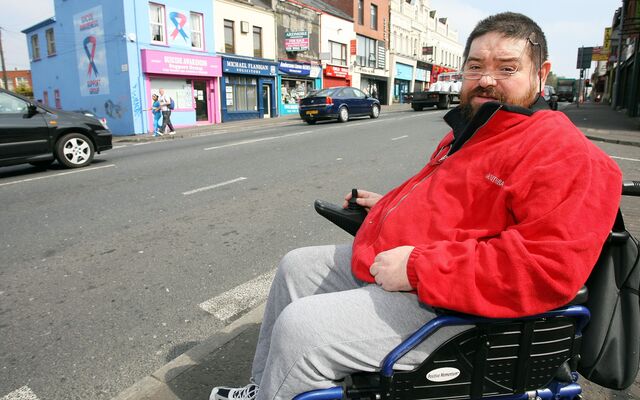When I told friends I had been baking in Ballinamore when away for an extended weekend, they thought was attending a Ballymaloe-style cookery school. Not the bit of it. I was simply enjoying the wonderful hospitality of Lovely Leitrim during our summer heat surge when temperatures in Mohill soared above Malaga and Magaluf.
Why Ballinamore? A combination of having briefly enjoyed the charms of Ireland's least populous county — I know more Leitrim people in New York than I do in the county of 32,000 souls itself — on a one-night stop over in the before times of 2019. Then, I had dallied briefly in Kiltyclogher to visit the home of 1916 leader Seán Mac Diarmada and enjoyed Dutch pancakes at a superb b&b run by two blow-ins from the Netherlands.
I had promised myself to return to check out if the Hidden Heartlands — a new Tourism Ireland brand set to rival the knockout Wild Atlantic Way — were as beautiful and impressive as my brief visit indicated. There was one other consideration: Maximum mileage in my new Volkswagen ID.3 electric car is just 320 miles so a trip to the borderlands eased my distance anxiety.
LAOCH: Monument to John Joe McGirl in Ballinamore. 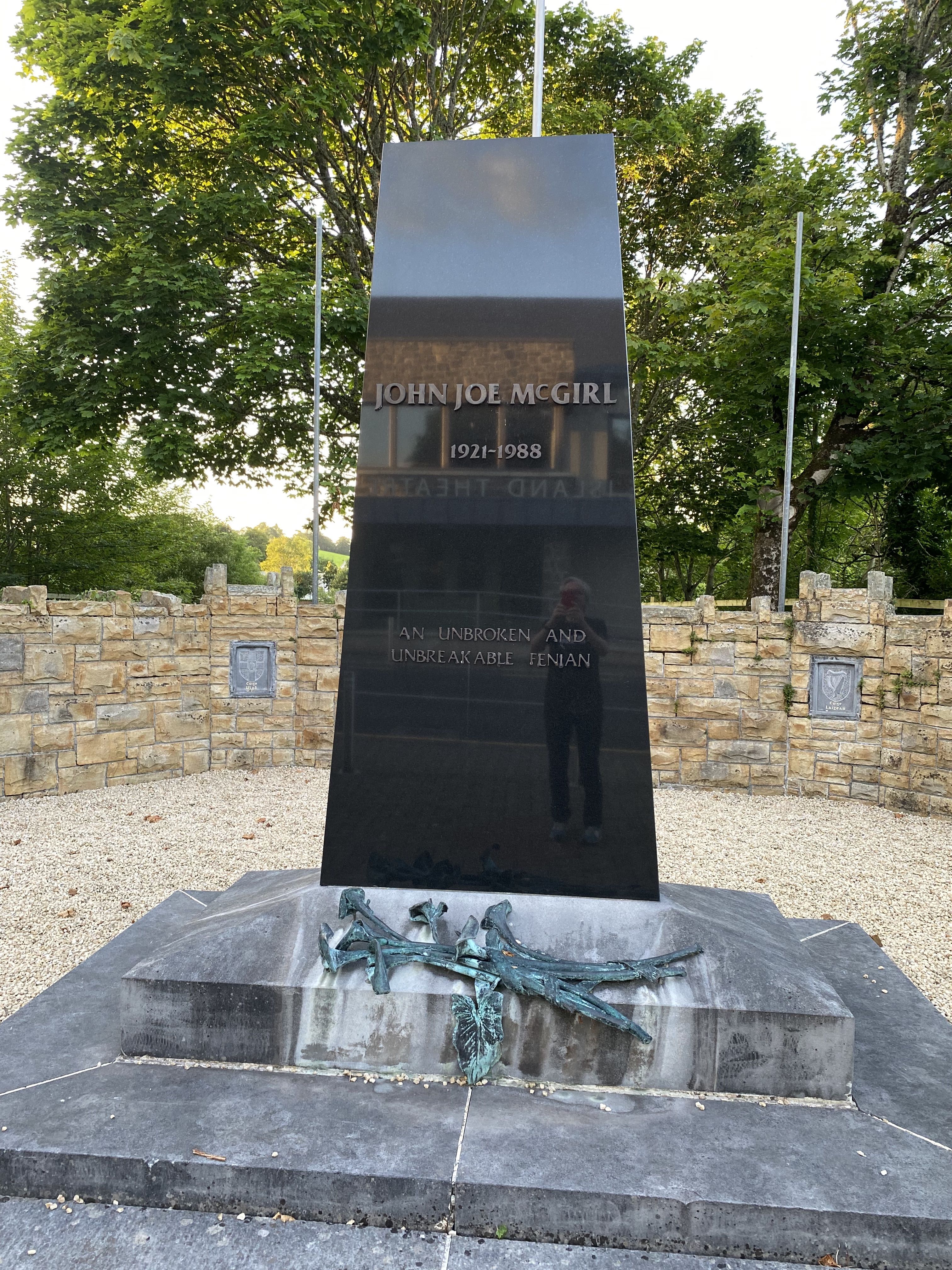
And, of course, Ballinamore is a place of great fame in republican lore where visitors from Belfast have always found a hearty céad míle fáilte. Indeed, Main Street boasts an impressive black marble monument by artist Robert Ballagh honouring that legendary, latter-day Fenian John Joe McGirl.
It also helped that at a time when hotel rooms were at a premium, I had stumbled upon a centrally-located Airbnb property which was, at a time of merciless price-gouging, reasonably priced.
BOAT ON BLUEWAY: Picture from the canal bank pathway outside Ballinamore.
There is much to like about Ballinamore - even in its semi-hibernation as Covid restrictions meant dining was outdoors-only. Indeed, only four of the village's nine hostelries were open for business; a majority of owners concluding that opening their doors to reduced capacity wasn't worth the candle.
Sunday morning in downtown Carrick #CarrickOnShannon #Leitrim #Roscommon pic.twitter.com/fJ8h4oZIeu
— Keith Nolan (@keithnolanphoto) July 18, 2021
I can heartily recommend Smyth's Siopa Ól agus Tae where the gracious hosts Cathy and Ciarán Smyth oversaw a rambunctious open-air restaurant and bar area. Their dedication to their customers — about two thirds locals, one third visitors, including amateur sailors off the boats on the Shannon — knew no bounds: they had even skipped watching their footballing son line out for Ballinamore against neighbours from the village of Leitrim so as they could better tend to their guests.
IT DOES WHAT IT SAYS ON THE TIN: The Commercial and Tourist Hotel in downtown Ballinamore.
The food was scrumptious, the welcome fierce, and the mood upbeat. There has been much sturm und drang about young people south of the Border not being allowed into hostelries from today on (Monday 26 July) when the restrictions on indoor dining are lifted but, to my eyes, the youth will find plenty of fun outdoors until they are called for vaccination. I doubt very much if they will miss our company for the two months or so it takes to get themselves jabbed.
Smyth's became very much our local and I can attest to the splendour of their steaks and the smoothness of their porter.
HOME TURF: Turf stacked to dry in bogs above Mohill. 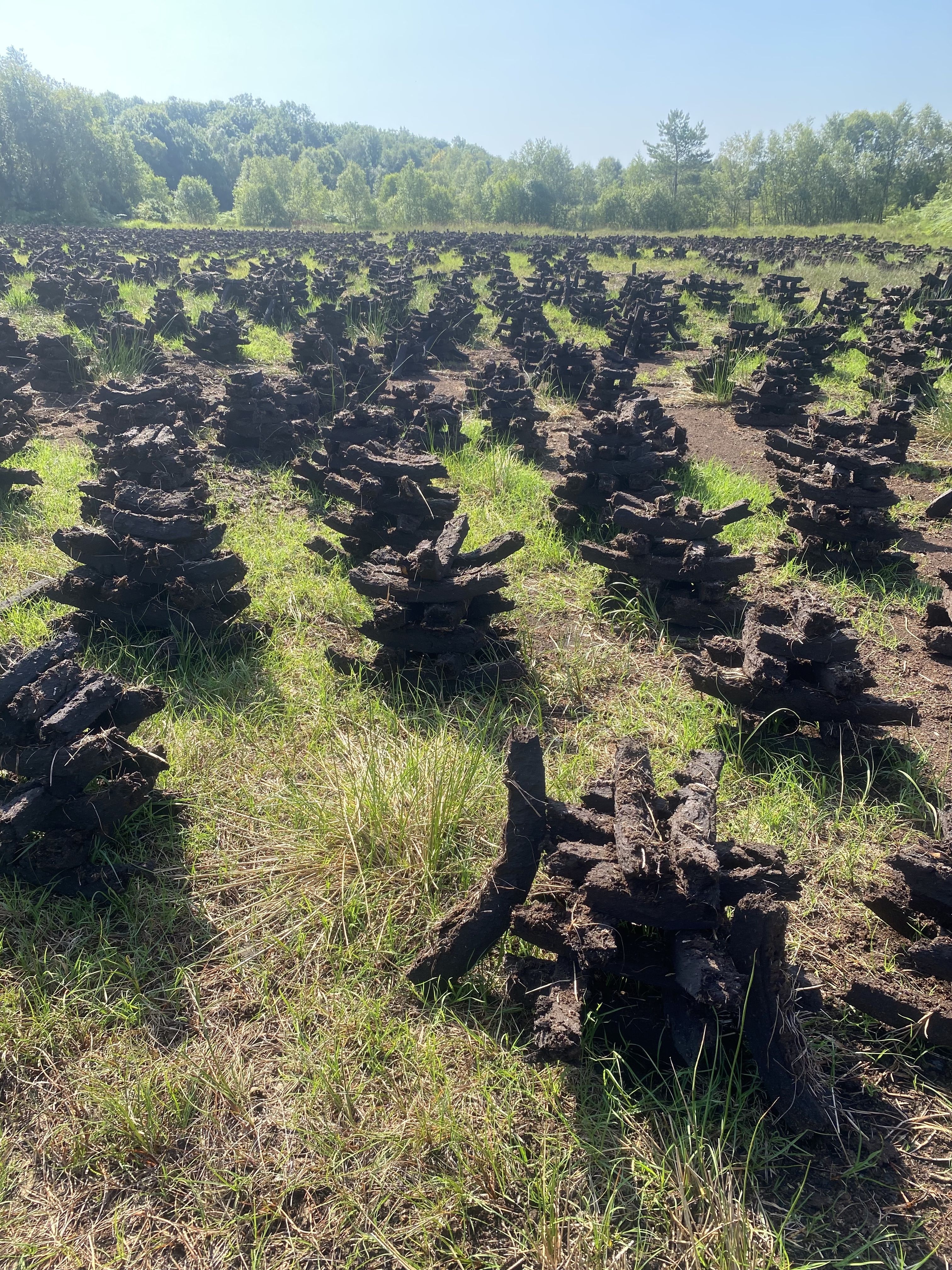
But five stars as well for the Commercial and Tourist Hotel, run by the welcoming Walsh family, where they more than live up to the dual statements in their prominent signage on Main Street: 'Rest for the Weary' and 'Food for the Hungry'.
Stripped off much of its lively summer festival events and community celebrations and with most of its ancillary tourist operations shuttered – such as the Solas art gallery, community hall and theatre — this visitor and his better half found great diversion in the pathways along the canals and waterways which link the Shannon and the Erne. Work was initiated on the canal linking Ballinamore to Ballyconnell as a Famine relief project in 1846 and was completed in 1860.
By then, however, railway transport was coming into its own and the canal was closed down in 1869, having served just eight boats in that time. In a stroke of visionary genius, well-oiled with peace funds, the canal was reopened from 1994 as a tourist amenity and in truth has transformed the region. And while the local railway will never be similarly restored, work is ongoing to build a greenway along its length for walkers - one hopes that will also lead to the restoration of the abandoned station house. If you find yourself inspecting the shuttered station, idle a while at the John McGahern bench honouring that gifted writer whose works capture Leitrim life like no other. A test to the searing, truth-telling power of his pen: he was among the many Irish writers whose works were banned by the Irish Government. I had ordered a copy of 'That They May See the Rising Sun' as a study guide to the county but inconveniently left it behind in Belfast!
THE GREAT LOCKOUT: Drumshambo was a shadow of its former self under lockdown. Pic: courtesy Aisling Gillen.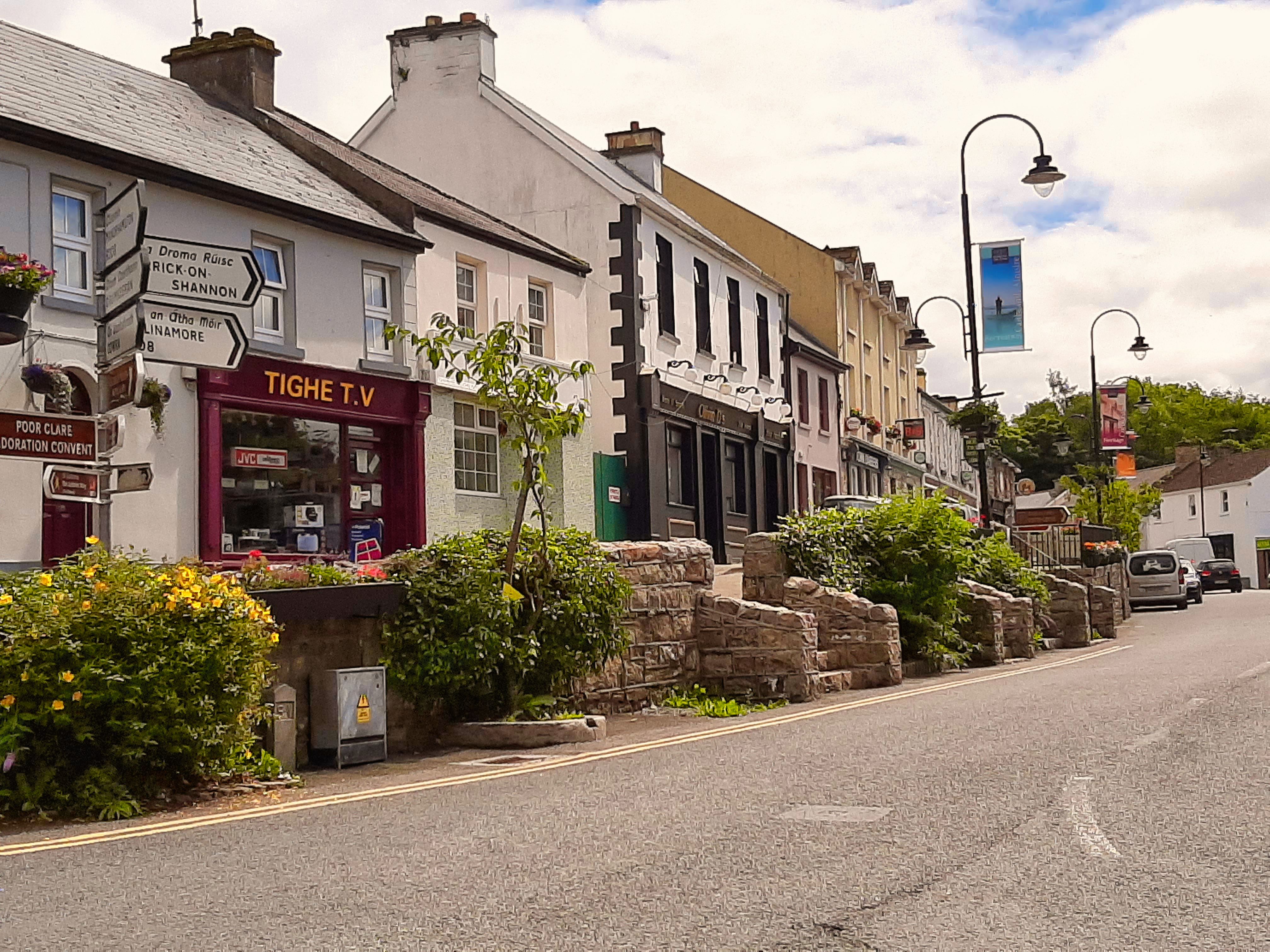
Usually, the vessels on the Shannon-Erne blueway would be captained by holidaying French or German visitors but with incoming tourists all but barred due to Covid, the Irish, for once, were ruling the waves. It's an idyllic trip from Enniskillen in the North to the bustling Carrick-on-Shannon (Ireland's hen and stag capital — you have been warned) in the South and watching their elegant and steady progress was sport enough for us.
There is nothing more dangerous than a man with a plan on a holiday excursion. My detailed itinerary had included a run up Sliabh an Iarrainn - which takes its name from the iron deposits on its slopes – as part of my masochistic training regime for the Donegal Seven Sisters mountain run next month. Thankfully, the scorching sun put paid to that plan.
Instead, I fulfilled my ambition of visiting the coast of Leitrim — and walked all 4km of it. It's the shortest coastline in the country and our efforts to get down to the rocky shore were thwarted. But we did have a glorious stroll through the townland of Tullaghan which is just 100m in distance but 100 miles in quietude from the roaring Bundoran-Sligo road. Sadly, farmers had posted ominous signs warning sudden death to anyone who dared enter their lands to reach the sea or even to view the nearby St Patrick's well. Since reading Kevin Barry's masterful 'The Coast of Leitrim', I had always wanted to retrace his footsteps and, as a day out, it was a damned sight easier than scaling Sliabh an Iarainn.
PADDLING YOUR OWN CANOE: On the Shannon Blueway. Pic: Courtesy Gareth McCormack/www.garethmccormack.com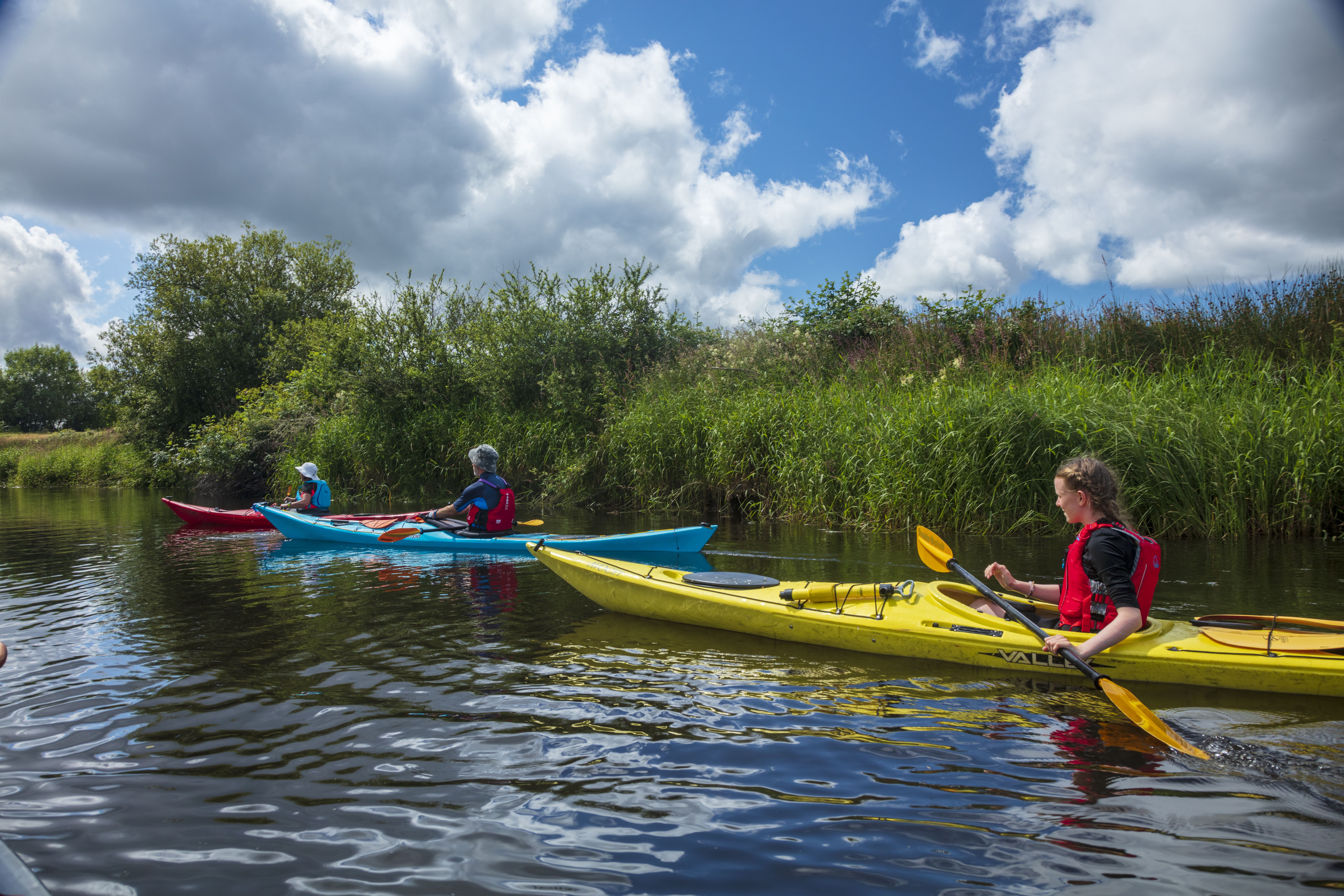
There was nary a pub nor eating house in Tullaghan but we had our sights set on dinner outdoors on the way back in picturesque Drumshambo — home to the Gunpowder Gin, of which we saw no trace. It was not to be; Drumshambo had neither café, bistro, bar nor hostelry open for the hungry and weary traveller. More's the pity as it had that unmistakable vibe of a great fleadh town.
Of course, that 100 mile round trip to the coast — where we also enjoyed a leisurely ramble along a new pathway beside the Duff River — meant that my EV batteries were perilously low.
Mist from the Shannon/Erne canal is rising up the field, looks amazing, will reach the house soon. #Leitrim pic.twitter.com/eHhSEcwqFw
— Kelly (@KellySWhalley) September 13, 2019
That necessitated a trip to Mohill the next day to the closest on-street charging point. The folks at ESB have built a nation-wide network of charging points, reasonably priced in the South, free in the North. A quick call to the helpline and I was tutored in how to download the ecar app and get started. Unfortunately, this unit was the slowest of the three types of charger. A full top-up would have taken six hours but after a run up to the bogs above Mohill — where I met a farmer bringing in dried and stacked turf — and a to-die-for bacon and black pudding baguette while sitting on a stool at the downtown crossroads, I had enough juice to keep the show on the road.
Building up an appetite along the walks on the banks of the canal — after applying Factor 50 and donning cap — is a must for any Ballinamore visitor as is a trip to the football pitch where we had the good fortune to catch an exhilarating game between the women of Mayo and Monaghan. (A win for Mayo after a remarkable best-of-five free shootout in which only one player pointed.)
My prep reading list for our five-day sojourn included the authoritative 'Leitrim The Irish Revolution 1912-23' by Patrick McGarty and 'Selton Hill', a riveting read published to mark the centenary of a devastating British Army ambush of the South Leitrim flying column. It's fair to say that the Tan War and Civil War were not as tumultuous in Leitrim as they were further south — Ernie O'Malley considered the Roscommon/Leitrim area disappointingly quiet — but the transformation of the county in just a few short years from a fertile recruitment ground for the Great War to a hotbed of rebelliousness was simply stunning.
Priest and parliamentarian united at the outset of war to lure many's the young man away to fight "German barbarism". Indeed, the womenfolk were urged to do their bit too with one group of ladies being commended by the local MP for knitting socks for Indian troops "which showed how broadminded the people of Manorhamilton were".
JUICE BAR: Mohill Electric Vehicle charger. A 80-mile boost cost €5.
A more rewarding read, which preceded an afternoon excursion, was 'Selton Hill' by Padraig Leyden. This locally-published book tells, in graphic detail and with ample illustrations and pen-pics, the tragic tale of how six volunteers from a complement of just 11 flying column soldiers were slain by British troops on 11 March 1921. Led by Michael Collins' comrade and confidante Seán Connoly, the column was unwisely resting in two houses near the main road to Mohill when the British — alerted by two informers, one subsequently executed by the IRA, the other fleeing to Canda — struck.
As the volunteers raced to make their getaway they stumbled into the withering line of fire of two Lewis Guns – capable of discharging 600 bullets a minute — mounted on the road above their position. Five died on the scene, Seán Connolly passed away that night of his wounds in Carrick-on-Shannon barracks having refused treatment from a medical officer dressed in British uniform. Amazingly, four of the IRA cohort managed to survive the British blizzard of steel and make good their escape while a fifth seriously injured volunteer hid in the freezing waters of a stream and was rescued later that day by locals who had heard his cries. Hot pot lids were put on his feet to (successully) stave off hypothermia and he bore the scars until his death.
The striking and solemn sculpture honouring the Selton Hill fallen, just yards from the ambush scene, is as evocative and mournful a monument to the Tan War as stands in Ireland.
PRIDE: Selton Hill momument.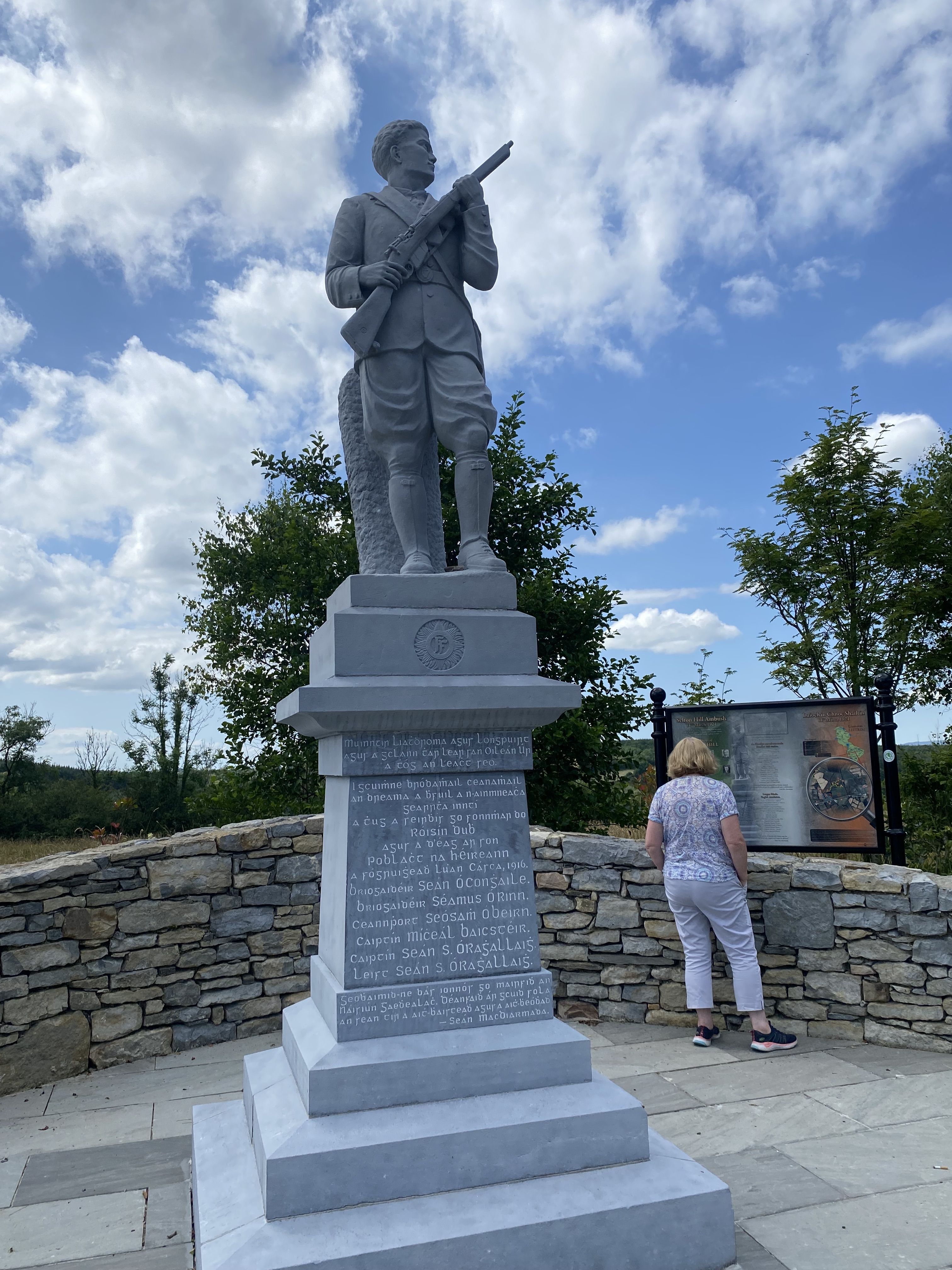
Readers will note that I visited none of Leitrim's standout attractions. I took a raincheck on the Arigna Mining Experience (closed for Covid at any rate as was the Ballinamore Genealogical Centre), skipped the magnificent Glencar Waterfall, angled none, avoided the county's many monasteries of historical repute, foreswore a skinny dip in its many splendiferous (but dangerous) lakes, and took the wheel not once on a pleasure boat.
For all that, I had the most fulfilling and relaxing staycation and am resolved to uncover more of the hidden heartlands in the time ahead — even when, post-Covid, the thrill of foreign travel will surely beckon.
And did our trusty stead – impervious to jibes of "milk float" and "dodgem car" from flat-earthers — get us home safe and sound? Indeed it did though it had me sweating, literally, as I turned off the air-con to save the battery on the road in from Enniskillen. I had all of seven miles power to spare in the battery when I reached home and the security of my domestic charging point. But with weather patterns turned on their head due to global warming, isn't this new-fangled version of The Wearing of the Green the perfect soundtrack for any Ballinamore idyll?
Anyone wishing to travel to Ballinamore should check out the tourist guide website (for some reason the tourist office was closed throughout our visit so download maps from the web just in case...).
I stayed in a tremendous Airbnb townhouse (where the owner was always available if needed) which I recommend highly. It's tucked into St Brigid's Street which is to Ballinamore what Broadway is to New York.





